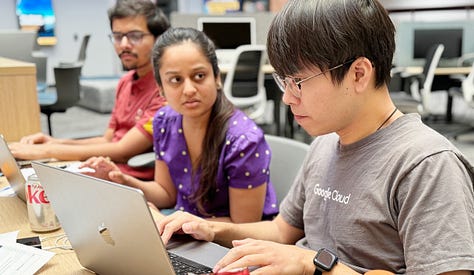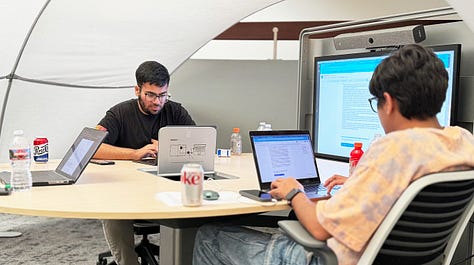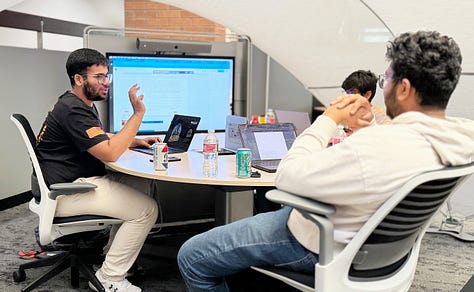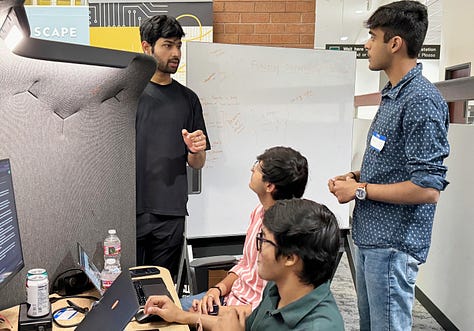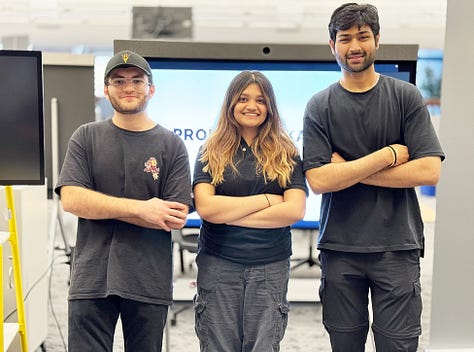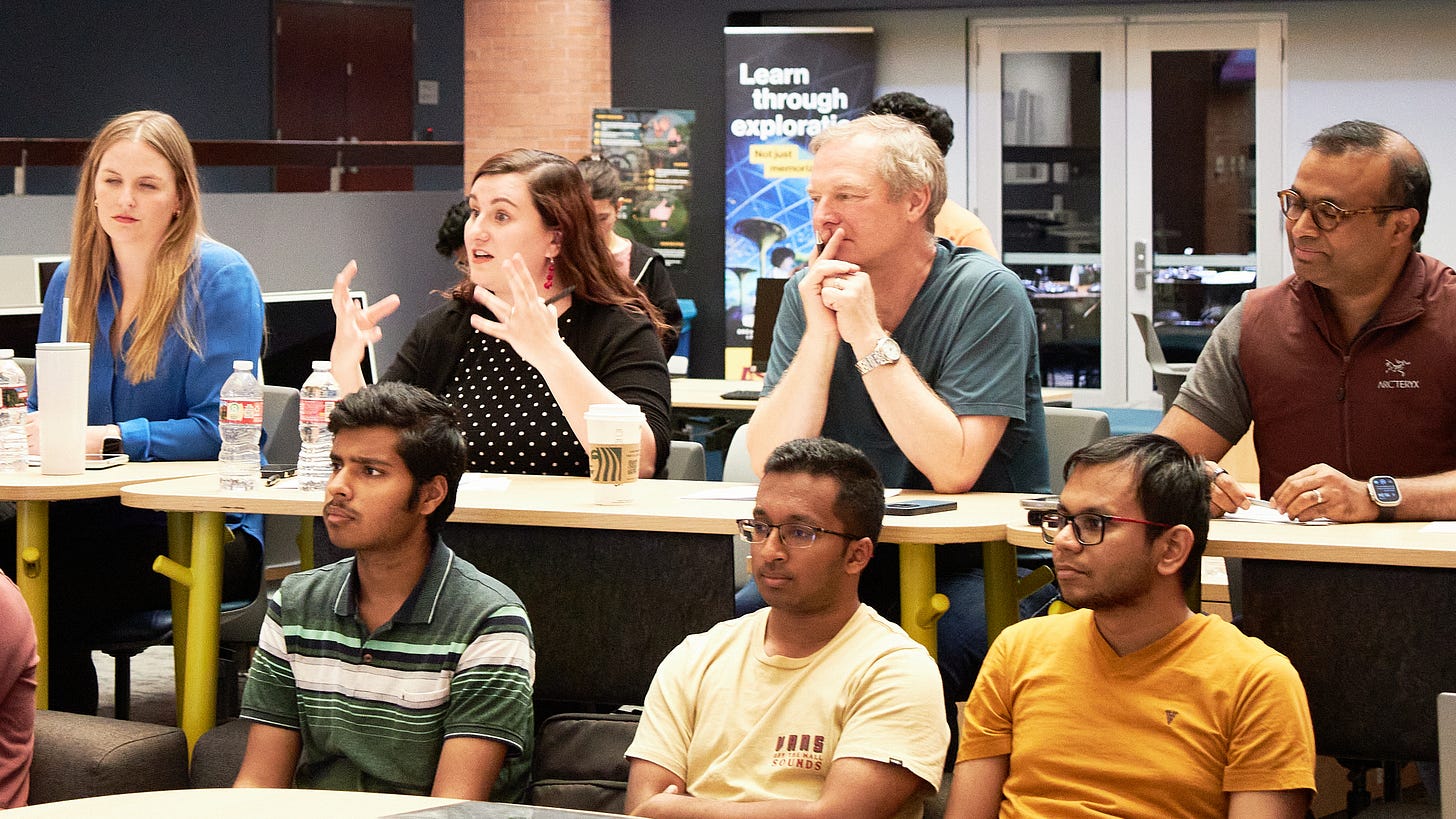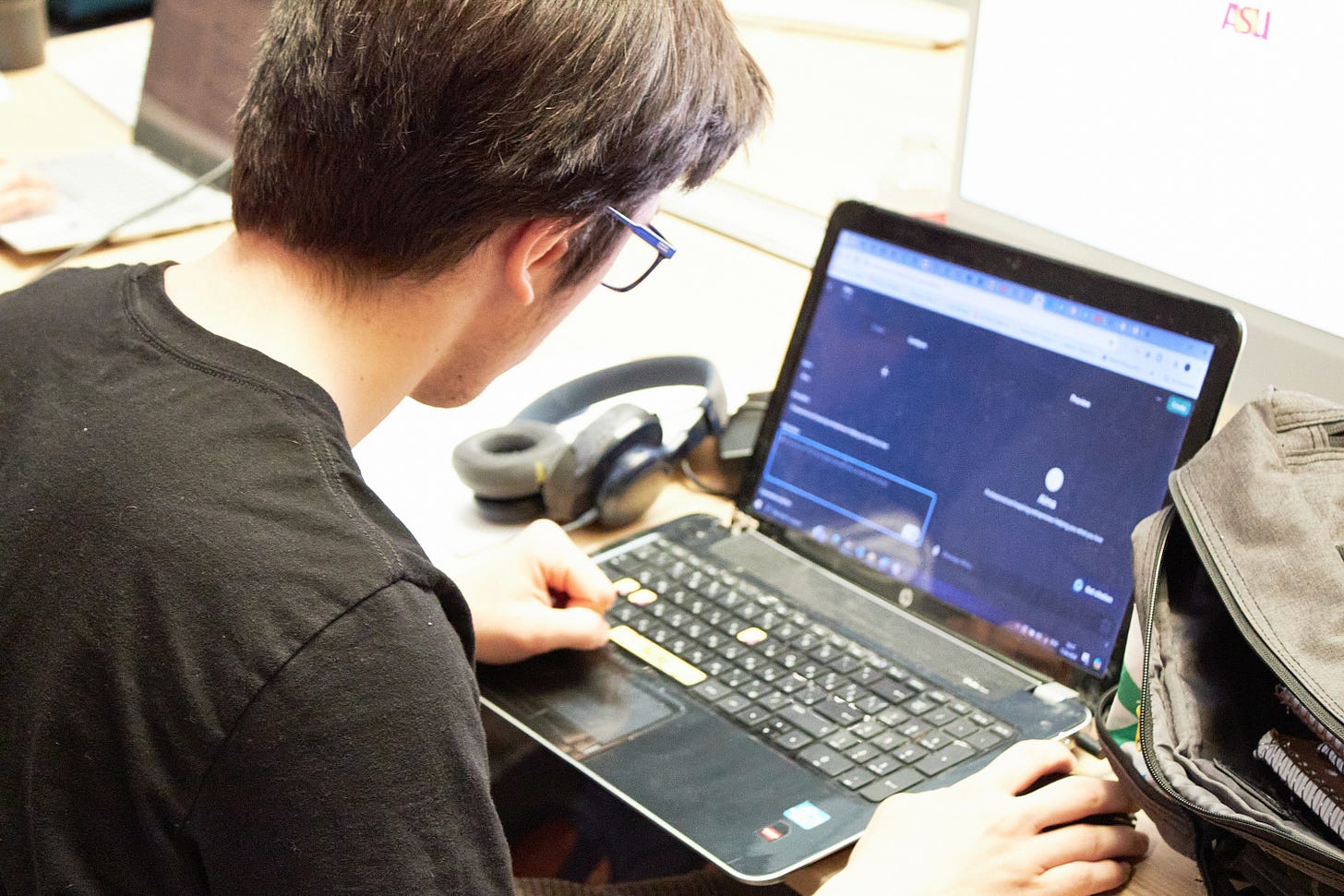ASU students flex their creative muscles with ChatGPT Enterprise
Students got to benefit from Arizona State University's collaboration with OpenAI at a recent hackathon as they used ChatGPT Enterprise for the first time. And they smashed it!
Back in January I wrote about Arizona State University’s collaboration with OpenAI — the one that’s giving ASU members institutional access to ChatGPT Enterprise. The first wave of enterprise licenses was limited to faculty and staff who were interested in leveraging the the platform in their work. This past weekend, students got to use ASU’s ChatGPT Enterprise account for the first time. And the results blew me away.
The occasion was a prompt hackathon that was organized and run by ASU’s Prompt Engineering Club — a fully student-led club. And it was a big deal as students have been clamoring for access to ChatGPT’s most advanced model through the university for some time.
We were a little ahead of the curve thanks to the support of ASU’s Enterprise Technology group — it’ll be a week or so before other students get access — but the investment was one that was well-made.
The brief for the hackathon was set by its sponsor: DreamBuilder. DreamBuilder is a unique initiative within ASU’s ThunderBird School of Global Management that provides women from around the world with resources and training to launch their own business.
It’s a program that has had an outsized impact on helping women entrepreneurs succeed around the world through targeted and relevant training, and currently operates in over 130 countries. But it has yet to take substantial advantage of cutting edge AI capabilities.
With this in mind, the the hackathon teams were asked the following:
Considering the mission and target audience of DreamBuilder, create a tool that can be used with the program to enhance entrepreneurship education. The tool should be specific – we are not looking for a general “DreamBuilder GPT”, but rather a tool that addresses a specific entrepreneurship skill or enhances the learning of DreamBuilder in some way. Extra points will be awarded for creativity and out-of-the-box thinking.
Each team member was given a ChatGPT Enterprise license (courtesy of Enterprise Technology at ASU), and three hours to come up with a Custom GPT that addressed the prompt.
I was fortunately to be one of four judges for the competition, and also had the chance to speak with and observe the teams through the day. I’m also the club’s faculty sponsor and mentor.
The students participating in the event were from a wide array of backgrounds — just under 40 students participated, making up 12 teams. Some were competent coders and others had some experience with generative AI. But there were a sizable number who were not coders and who had very limited experience of ChatGPT.
Despite this, the speed with which teams were able to come up to speed with how they could leverage the capabilities of ChatGPT Enterprise was impressive. And at the end of the day, every team produced a pretty amazing custom GPT and pitch.
To give you a flavor of the creativity and innovation on display I wanted to give a call-out to some of my favorites that didn’t make the final three. First off is “Better Call GPT” — a complete service company setup GPT that used ChatGPT Enterprises large context window to train it on hundreds of pages of documents describing how to start a business.
Better Call GPT had some limitations that needed more work, but the team had far and away the most compelling — and entertaining — pitch!
Then there was “EmpowHer” — a marketing simulation GPT that allowed users to work through three increasingly advanced phases of marketing strategies for a simulated scenario.
I was also impressed with “ScamScanner” — a GPT that was trained on extensive resources on how to spot and avoid scams, so that it could help users spot messages from scammers. It even had a feature where you could cut and paste an email and it would give you the likelihood of it being legitimate or not.
This GPT struck me as particularly important for helping DreamBuilder participants avoid being taken for a ride by scammers who are getting increasingly sophisticated.
Then to the winning teams.
AlmaAI
In third place was AlmaAI (Alma is a DreamBuilder persona). The GPT had two goals: To ensure every user, regardless of background, can fully benefit from and be empowered by the DreamBuilder program; and to reinforce the learning from the DreamBuilder program.
AlmaAI was very smartly designed to act as a personal tutor with any aspect of the DreamBuilder program. The GPT was able to work with users from whatever level of understanding they started with and, using reinforcement learning, guide the through the program. As well as a very effective interface, AlmaAI was able to draw on a wealth of information on reinforcement learning and the DreamBuilder program through its custom knowledge base.
Customer Journey Storyboard
In second place was Customer Journey Storyboard. This GPT tacked the challenge that not all learners are text-based learners — especially in a program that spans as many countries, cultures, and levels of education as DreamBuilder does. And so it set out to get ChatGPT to convert DreamBuilder modules into visual storyboards — essentially short graphic novels.
Two things stood out to me as being especially smart with this GPT. First, the team spent some time training ChatGPT to output consistent images for a storyboard — as anyone who’s tried to do this knows, this is challenging. The solution was to use a set of character images in the training documents — and it worked very well.
The second was to have a choice of conversation starters that established the user’s level of understanding — beginner, intermediate, or experienced. The GPT was designed to respond with increasing levels of detail depending on what the user would find most useful.
DreamGrant
Finally, in first place was DreamGrant — a GPT designed to help women entrepreneurs develop a better understanding of their funding needs and provide guidance on where to find funding.
The DreamBuilder team especially liked this GPT as it addressed a clear need within the program. It was also trained on rubrics that ask questions about an enterprise that are designed to help match needs to funding sources — and it provided users with a PDF outlining funding options tailored to the specific enterprise.
Innovation on steroids
These teams especially, but all the participants, were incredible. They demonstrated what can be achieved by motivated students with access to cutting edge generative AI in a very short space of time. And they underlined the transformative potential of providing broad access to these tools rather than limiting it in universities.
Each of the winning GPTs drew on the creativity of the teams creating them. But more than this, these teams were also able to leverage the capabilities of ChatGPT — and even “hack” them — in innovative ways.
Teams used the ability to upload knowledge sources to their GPTs to good effect — while utilizing the large context window of ChatGPT Enterprise to train their GPTs on a lot of information. They made great use of ChatGPT’s image creation abilities. And they were creative in using ChatGPT’s ability to generate PDFs.
But more than anything, they showed that creating a virtual playground where enterprising students are let loose on a powerful general purpose technology like ChatGPT, leads to outcomes that far exceed expectations.
Which suggests that we should be giving our students a lot more free reign on how they experiment with and “hack” AI 😊
Acknowledgements
I can’t finish this article off without a couple of acknowledgements. First off, the students of the Prompt Engineering Club of ASU, or PECA, were amazing. The whole hackathon was devised, planned and run by them. An amazing job!
Secondly, the support they received from AI Acceleration at ASU was pivotal in participants having access to ChatGPT Enterprise — access that will last another month and a half, so that they get to continue to explore.
And finally, a huge thank you to the amazing team at DreamBuilder for sponsoring the event and being so engaged — do check out the amazing work they’re doing!
